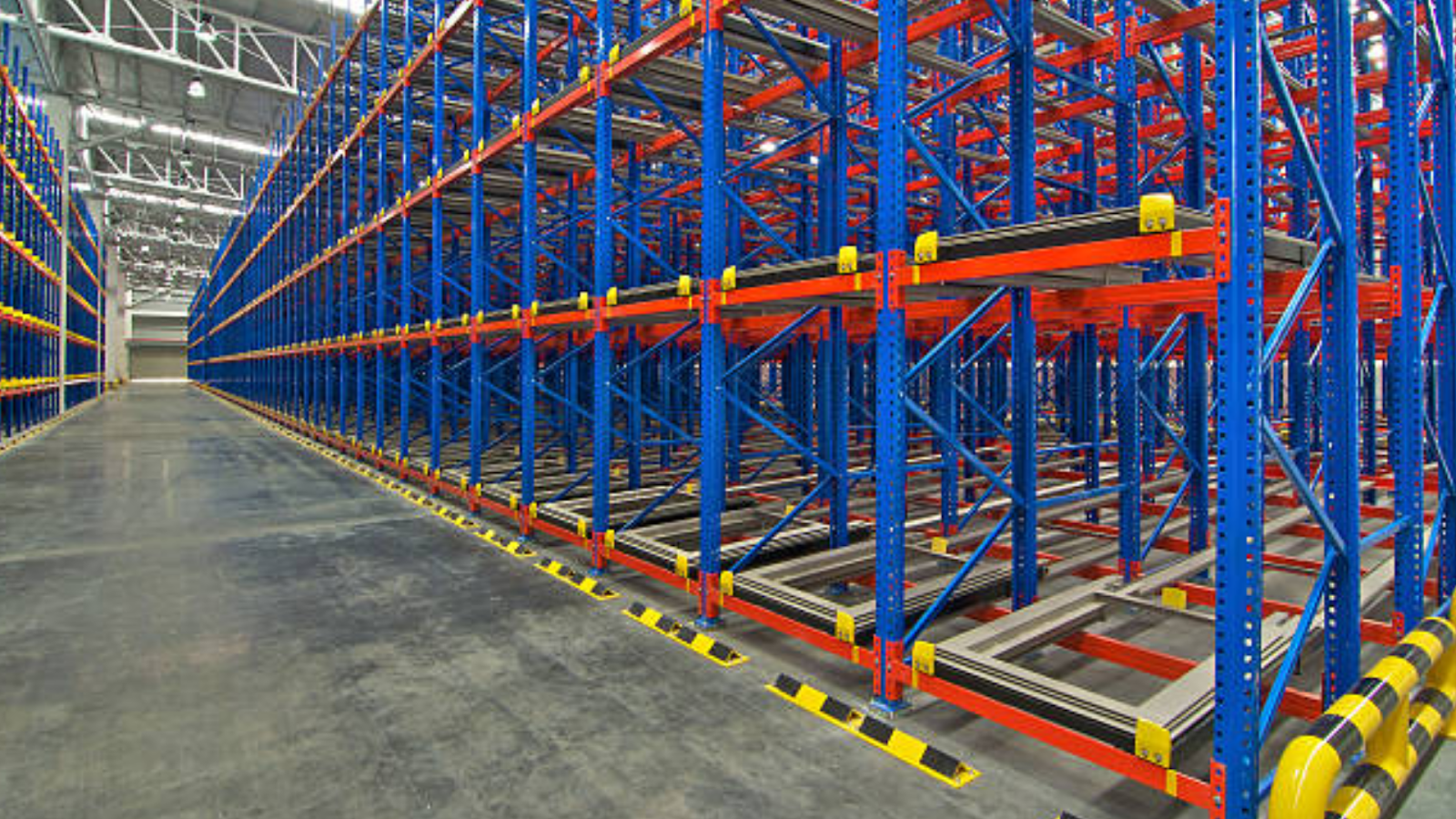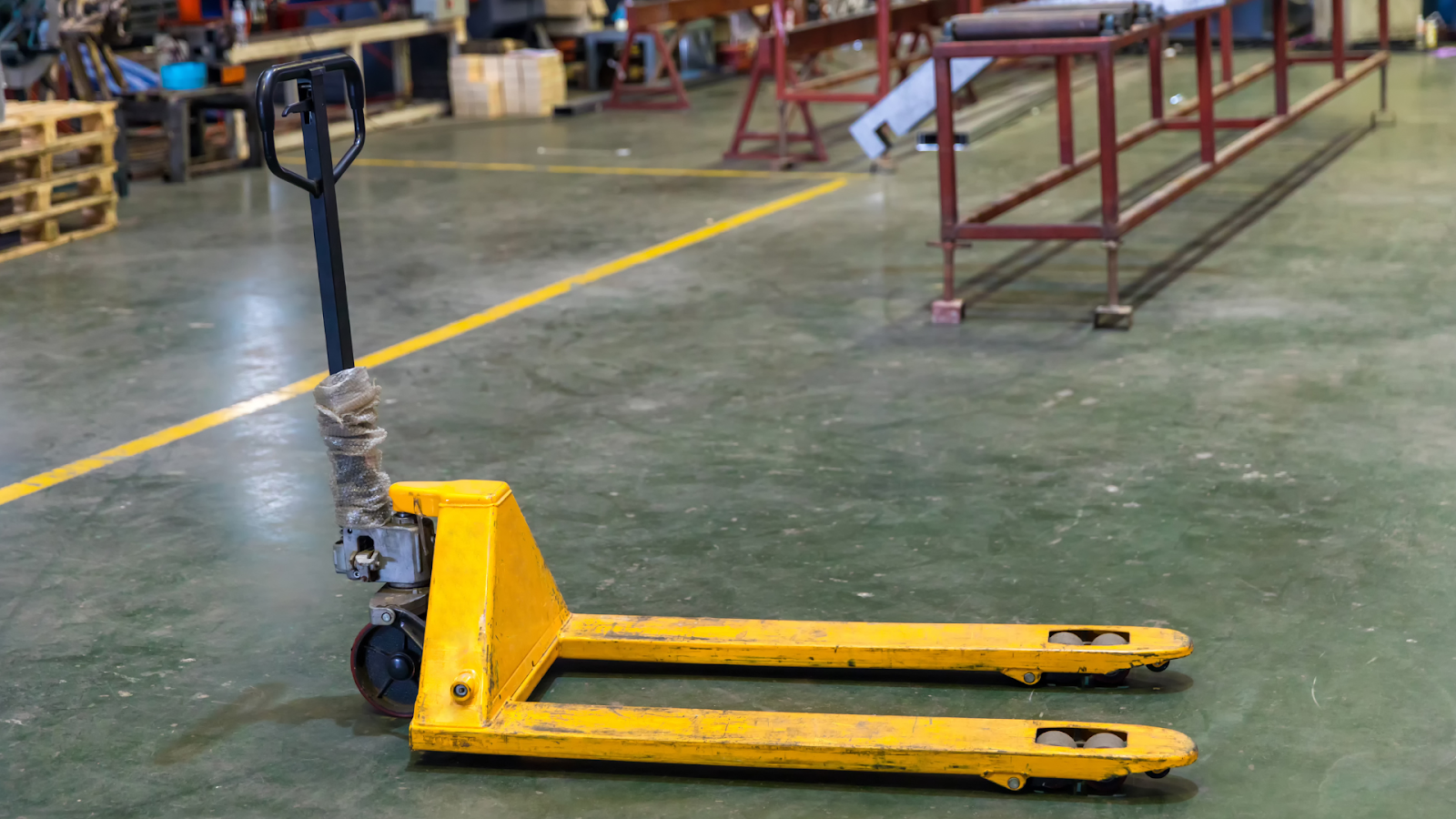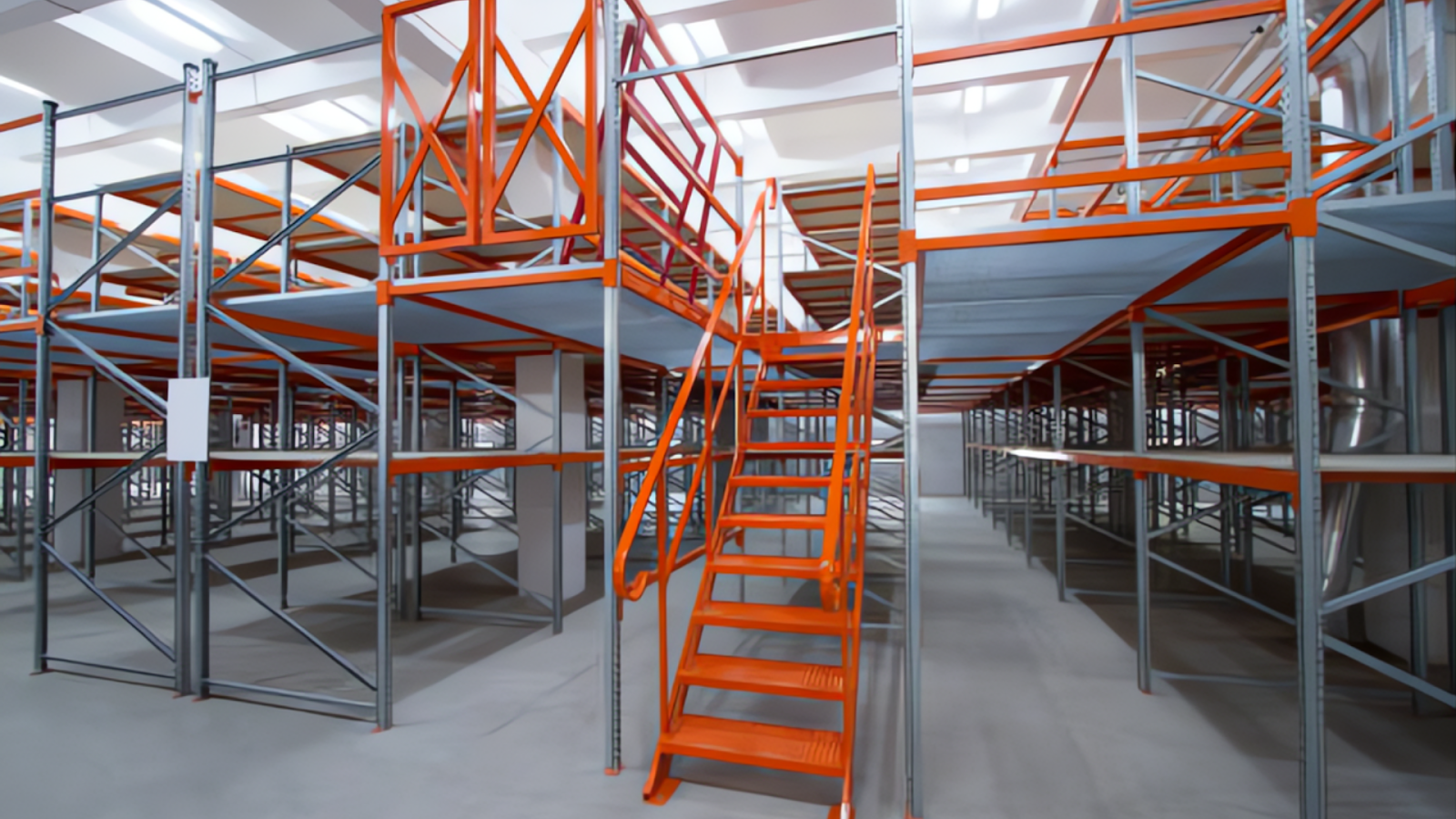When it comes to optimizing warehouse space, two storage solutions stand out: pallet racking and shelving. Both systems offer unique advantages depending on the type of products and storage requirements. However, understanding the difference between industrial shelving and pallet racking is crucial for making an informed decision.
According to recent data, the global pallet racking market is projected to reach $22.19 billion in 2032. This underscores the increasing demand for efficient storage solutions in warehouses worldwide.
This blog will explore the various types of pallet racking and shelving and assist you in choosing the best system for your company.
Pallet racking is a storage system designed to store pallets of goods in a vertical configuration, maximizing the use of warehouse space. It is often used in high-volume warehouses where large quantities of goods need to be stored efficiently. Pallet racks are versatile and can be customized to accommodate various types of products, from bulk goods to specialized items.
These systems typically consist of a series of vertical frames, beams, and decking that hold pallets, allowing forklift access to retrieve and store goods. Pallet racking is often used in environments where products are regularly moved in and out, such as distribution centers, manufacturing plants, and retail storage areas.

The pallet racking industry is undergoing significant transformations, driven by advancements in automation, smart technologies, and sustainable practices. The following innovations are reshaping warehouse operations:
Looking to enhance operational efficiency and optimize warehouse space? Source Equipment supplies top-tier products like Husky Rack & Wire’s secure access cages to improve workflow and safety compliance. These solutions are designed to streamline your operations, increase productivity, and secure valuable inventory.
Request a free consultation to discuss how our trusted partner products can transform your warehouse operations.
Now that we know what pallet racking is, let’s explore the different types available.

When selecting a storage system for your warehouse, understanding the different types of pallet racking is crucial for maximizing space efficiency and accessibility. Below, we’ll explore the various pallet racking systems available, each suited for different operational needs.
Selective pallet racking is the most common and versatile form of pallet racking. It allows easy access to every individual pallet stored in the system, making it suitable for a variety of warehouse operations.
Benefits:
Properties:
Uses: Suitable for warehouses dealing with diverse inventory, where quick and frequent access is needed.
Industry Applications: Widely used in retail, food distribution, manufacturing, and e-commerce fulfillment centers.
Drive-in racking systems allow forklifts to drive directly into the racking lanes, storing multiple pallets deep within each lane. This system is designed for high-density storage of similar items.
Benefits:
Properties:
Uses: Ideal for storing products that don’t need to be accessed frequently and are not time-sensitive.
Industry Applications: Common in cold storage, bulk goods storage, and large manufacturing facilities.
Push-back racking allows pallets to be stored on carts that move backward as new pallets are added, effectively increasing storage density while maintaining easy access to each pallet.
Benefits:
Properties:
Uses: Best for operations that require quick access to stock but still need high storage density.
Industry Applications: Ideal for distribution centers, manufacturing warehouses, and retail environments with a wide variety of products.
Pallet flow racking systems use gravity to move pallets from the back of the racking system to the front, ensuring a FIFO (First-In, First-Out) inventory system for perishable or time-sensitive goods.
Benefits:
Properties:
Uses: Common in environments with perishable goods or time-sensitive products, ensuring quick stock rotation.
Industry Applications: Perfect for food distribution, pharmaceuticals, and electronics manufacturing.
Cantilever racking is used for storing long, bulky items like pipes, timber, and furniture. The design eliminates the need for vertical supports in the front, offering better access to long goods.
Benefits:
Properties:
Uses: Designed specifically for industries that store long and irregularly shaped items like pipes, lumber, and steel beams.
Industry Applications: Common in the construction, furniture, automotive, and steel industries.
Double deep racking allows two pallets to be stored in a single bay, increasing storage density while maintaining easy access to each pallet with the right equipment.
Benefits:
Properties:
Uses: Ideal for operations with large volumes of similar products that don’t require frequent stock rotation.
Industry Applications: Common in manufacturing plants, bulk goods warehouses, and distribution centers with high product turnover.
While pallet racking is ideal for bulk items, shelving is better suited for smaller products. Understanding shelving systems will help in choosing the best storage solutions for your goods.
Shelving refers to a storage system that typically involves horizontal shelves stacked vertically to hold various items, such as boxes, files, or equipment. Unlike pallet racking, shelving often targets smaller, lighter items and is frequently used in offices, retail stores, or small warehouses. It is more customizable in terms of product size and is generally easier to install and maintain.
Struggling with cluttered storage and security issues in your warehouse? Source Equipment distributes reliable storage solutions like Bayhead Products’ stacking pallet containers and Quantum Storage’s steel shelving, designed to maximize storage capacity while improving organization and compliance. These durable products help secure your inventory and optimize space.
Get a custom quote and find the right storage solutions to address your unique operational needs.
Shelving systems are evolving with the integration of smart technologies, modular designs, and sustainable materials. These developments are revolutionizing storage solutions, offering greater flexibility and efficiency in various industries.
There are various shelving systems designed to meet the needs of different industries. From steel shelving to modular units, selecting the right type can significantly impact space utilization and workflow.

Shelving systems are essential for organizing and storing items in smaller, more accessible units. Here’s an overview of the different types of shelving solutions, each offering unique benefits for businesses with diverse storage needs.
Steel shelving is a heavy-duty option made from high-strength steel, designed for industrial or high-demand applications.
Benefits:
Properties:
Uses: Ideal for heavy-duty storage applications where durability and strength are needed.
Industry Applications: Common in warehouses, manufacturing facilities, and libraries.
Rivet shelving is a boltless system that uses rivets to secure the shelves, providing a sturdy storage option with easy installation and reconfiguration.
Benefits:
Properties:
Uses: Perfect for small and medium-sized businesses that need flexible storage solutions.
Industry Applications: Widely used in offices, archives, retail stores, and small warehouses.
Wire shelving is a lightweight yet durable shelving solution made of steel wire, offering excellent airflow and visibility of stored goods.
Benefits:
Properties:
Uses: Commonly used in environments where airflow is crucial, such as food storage or industrial areas.
Industry Applications: Perfect for kitchens, retail, pharmaceutical, and warehouse storage.
Bulk rack shelving is designed for storing large quantities of goods in bulk containers. It offers strong, durable shelving that can withstand heavy loads, making it suitable for industrial or warehouse environments.
Benefits:
Properties:
Uses: Ideal for storing large, heavy items or bulk goods, such as parts, boxes, or crates.
Industry Applications: Common in manufacturing, retail, automotive parts storage, and warehouse environments.
Boltless shelving is similar to rivet shelving but uses a different mechanism for assembly, such as clips or snap-fit components, making it a versatile and easy-to-install option.
Benefits:
Properties:
Uses: Often used in retail or small warehouses where fast and flexible storage is needed.
Industry Applications: Ideal for small warehouses, home offices, libraries, and retail stores.
Knowing how pallet racking and shelving differ from one another will help you compare important features and determine which system best meets your needs.
Choosing between pallet racking and shelving involves understanding how each system can best serve your storage requirements. Below, we highlight the key differences to help you determine which option is right for your warehouse or storage facility.
Now that you understand the key differences, it’s time to evaluate which system, pallet racking or shelving, best fits your business needs.

Choosing the right storage system depends on the operational needs and the types of products you store. Here are key considerations based on different industries:
If your warehouse handles large, bulky items or high-volume products, pallet racking systems like selective or push-back racking will help you optimize space and improve operational efficiency.
For warehouses that deal with lighter or smaller products, shelving systems provide an efficient, cost-effective way to organize and access goods without requiring significant investment.
In manufacturing, systems like drive-in or mobile racking allow you to adjust aisles and maximize storage space, perfect for environments with a high volume of raw materials or finished products.
Shelving is ideal for storing smaller parts, tools, and components that need to be accessed regularly and without much hassle.
Logistics operations require high-density storage and quick access to products. Pallet flow or double-deep racking systems can help reduce handling time and streamline product rotation.
For logistics environments where small parts or packaging need to be managed, shelving systems like wire or rivet shelving help with inventory tracking and retrieval.
In retail, pallet racking can be used for storing large quantities of inventory and bulk items in the back of the store or in warehouses, allowing for easy stock replenishment.
Shelving is essential in retail stores for displaying products in an organized and accessible manner. It’s ideal for showcasing small- to medium-sized items for customer browsing.
For construction sites or warehouses that store heavy-duty equipment, materials, and tools, pallet racking provides robust and secure storage solutions to maximize space and keep items organized.
Shelving is useful on construction sites for storing smaller tools, fasteners, and other supplies that need to be easily accessible to workers.
With Source Equipment, you have access to a wide range of pallet racking and shelving solutions from trusted brands.
At Source Equipment, we understand the complexities of choosing between pallet racking and shelving for your warehouse or storage needs. With decades of experience in material handling and warehouse management, we specialize in distributing high-quality, durable equipment from trusted brands, designed to streamline operations, enhance safety, and optimize space utilization.
If you're looking to store heavy-duty items, ensure safe access, or improve organization, our comprehensive range of products from leading manufacturers is the perfect solution to meet your business's needs.
We offer a variety of Husky Rack & Wire solutions to enhance security and improve storage organization in your warehouse.
Our Bayhead Products line helps you organize and secure your inventory, improving space utilization and operational efficiency.
Quantum Storage systems offer durable shelving options designed to enhance inventory organization and space efficiency.
By sourcing high-quality solutions from our trusted partners, you can optimize warehouse space, improve safety, and achieve operational efficiency.
In conclusion, the difference between industrial shelving and pallet racking lies in their design, capacity, and suitability for different storage needs. Pallet racking systems excel in high-density environments, offering easy access to bulky, palletized goods, while shelving systems are ideal for lighter, more accessible items. Understanding these differences will help you make the best choice for your warehouse or storage facility.
Remember, opting for pallet racking or shelving depends on your space, product types, and business requirements. By carefully evaluating your needs, you can ensure that your storage system supports both your operational goals and your bottom line.
Remove bottlenecks and enhance warehouse workflow with Source Equipment's extensive selection of products from reliable brands. With Husky Rack & Wire’s pallet rack enclosures and Advance Lifts’ recessed dock lifts, you can maximize every square inch of your warehouse, improving both space utilization and operational efficiency.
Contact Source Equipment and explore our full product catalog to find the perfect solutions for streamlining your warehouse today!
To calculate the weight capacity of your pallet racking system, consider the weight of the pallets, the load-bearing capacity of the beams, and the strength of the uprights. You also need to factor in the number of pallet positions and ensure weight is evenly distributed across the racking system. This will prevent overloading any specific area, which can lead to structural damage or safety hazards. It's crucial to follow structural formulas for accurate calculations and adhere to manufacturer recommendations.
When choosing between pallet racking and shelving, consider the weight and size of the goods you need to store. Pallet racking is ideal for storing bulky items or high-turnover inventory, providing easy forklift access. On the other hand, shelving is better suited for smaller, lighter items that require manual access. Think about your specific storage needs, the type of products, and how often items need to be accessed to make the best decision for your business.
Pallet racking systems should be inspected regularly, ideally every six months or after significant changes in warehouse operations. Inspections should focus on checking for bent or damaged beams, loose connections, and signs of overloading. Routine maintenance ensures the system stays in good condition, preventing accidents. Safety inspections should also check for any wear from forklift traffic or other environmental factors, ensuring the racking system maintains its structural integrity and adheres to safety standards.
While shelving systems can support a range of products, pallet racking is generally better suited for heavy-duty items. For lighter-duty use, shelving works well but is typically not designed for high-load capacity. For heavier-duty shelving, opt for steel shelving or industrial-grade options, which are built to withstand heavier loads. These shelving systems are designed for a balance between capacity and accessibility, making them ideal for tools, small parts, and other items that don’t require a palletized approach.
Pallet racking maximizes vertical storage by using the full height of your warehouse, allowing more products to be stored in a smaller footprint. It’s particularly effective for bulk or high-turnover items, ensuring quick access while optimizing space. Shelving, on the other hand, efficiently stores smaller items in adjustable units, making it perfect for businesses needing flexibility and organization. Both systems are essential for improving space utilization while providing scalable solutions for growing inventory needs.




Ready to Upgrade Your Process Operations?